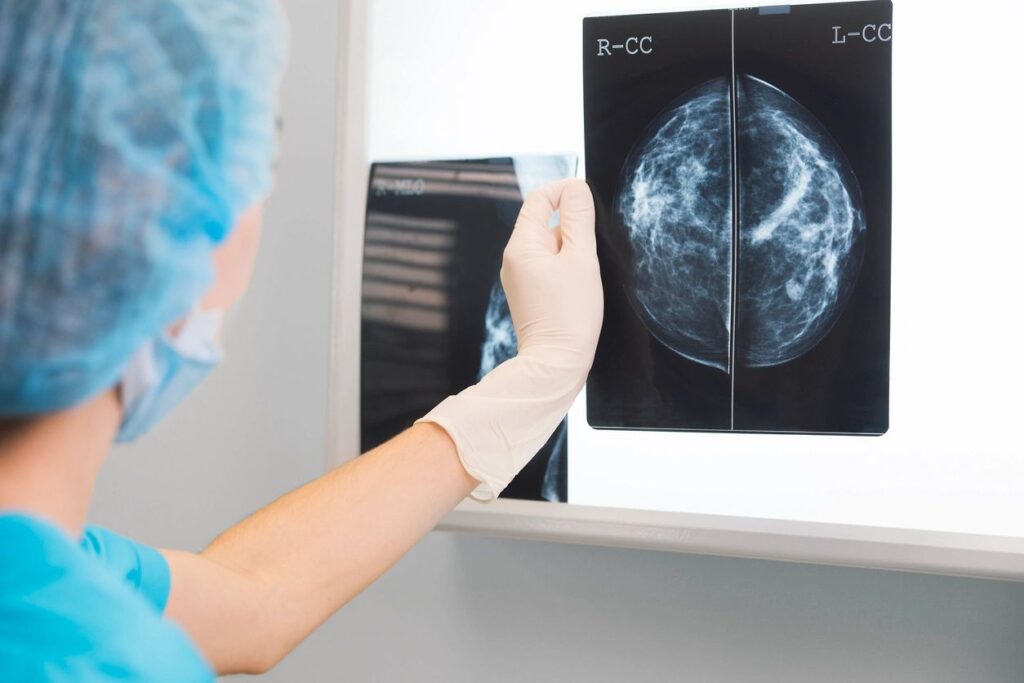Optimizing Breast Cancer Treatment: Surgery, RT, and cosmetic
Breast cancer treatment often involves a multidisciplinary approach, with mastectomy and radiotherapy playing crucial roles in many cases. Individuals who have been diagnosed with breast cancer and need to undergo mastectomy and radiotherapy face a difficult decision when they also desire cosmetic outcomes through breast reconstruction. Mastectomy, the surgical removal of the breast tissue, is frequently indicated for patients with larger tumors, multifocal disease, or certain histologic subtypes. Radiotherapy, on the other hand, is employed to target residual cancer cells in the breast or surrounding tissues after surgery, reducing the risk of local recurrence. The best sequence of these two treatments is still debated. Currently, the main goal of breast reconstruction strategies for patients receiving postmastectomy radiotherapy (PMRT) is to prevent any radiation exposure to the final reconstruction. This helps to minimize potential long-term complications and maintain patient satisfaction.
Historically, postmastectomy radiotherapy (PMRT) has been postponed until after reconstruction to avoid exposing the reconstructed breast to radiation. Radiation exposure can have harmful effects on both the cosmetic outcome of the reconstructed breast and the patient’s health. However, this approach often requires staged reconstruction with temporary tissue expanders, which can lead to complications such as cellulitis and implant explantation. These complications can delay radiotherapy and affect oncologic outcomes.
Immediate breast reconstruction (IMBR) performed at the time of mastectomy is a procedure that offers several benefits, such as reduced treatment costs, improved cosmetic outcomes, and enhanced psychosocial well-being for patients. However, concerns regarding radiation’s impact on the reconstructed breast have led to caution in using IMBR with PMRT. Researchers have explored novel approaches to address this issue, such as preoperative radiotherapy (PreMRT). PreMRT involves delivering radiotherapy to the intact breast and regional lymphatics before surgery. This allows patients to undergo IMBR at the time of mastectomy, avoiding the adverse effects of radiation on healthy donor tissues. This approach has shown promise in facilitating IMBR with acceptable cosmetic outcomes while minimizing the need for staged reconstruction.
Dr. Mark V. Schaverien conducted a prospective phase 2 trial in the US to assess the safety and feasibility of immediate breast reconstruction (IMBR) after regional nodal irradiation (RNI) (doi:10.1001/jamanetworkopen.2024.5217). The study involved 49 participants who underwent mastectomy and reconstruction after receiving either hypofractionated (HF) or conventionally fractionated (CF) RT for RNI. The internal mammary chain was included in the irradiation. The randomized clinical study found no cases of complete flap loss or recurrences observed during the median follow-up period of 29.7 months.
The study has shown positive outcomes regarding safety and cosmetic results, especially when using microvascular autologous tissue reconstruction. The PreMRT approach allows IMBR while avoiding potential delays in adjuvant radiotherapy, a significant clinical challenge. The study highlights the successful implementation of PreMRT, including regional nodal irradiation (RNI) involving the internal mammary lymph nodes. This differs from previous studies and shows that PreMRT is safe and feasible in such cases. Moreover, PreMRT offers some advantages over conventional post-mastectomy radiotherapy (PMRT), such as a potential increase in the number of patients undergoing breast reconstruction and a shorter delay between mastectomy and reconstruction.
Comparisons with existing studies, such as the PRADA trial, this study further underscores the favorable outcomes associated with PreMRT, including low rates of flap loss and treatment-related adverse events. Moreover, the absence of locoregional recurrences or distant metastases in the present study adds to the growing body of evidence supporting the efficacy of PreMRT in this context. Despite these promising results, the study acknowledges several limitations. These include the underpowered nature of the randomized phase 2 component, which limits the ability to compare different radiotherapy fractionation schedules or evaluate oncologic outcomes comprehensively. Moreover, the lack of standardized radiotherapy delivery techniques and potential bias in patient-reported outcomes represent additional challenges. However, the study’s feasibility trial status has paved the way for developing a larger clinical trial, TOPAz, to further investigate PreMRT in a larger patient cohort.
In conclusion, PreMRT in facilitating IMBR in breast cancer patients. Future research, including the ongoing TOPAz trial, holds promise for further elucidating the role of PreMRT in optimizing treatment outcomes and patient care in this population. Addressing concerns regarding the potential for local pathologic complete response (pCR) and its implications for adjuvant therapy underscores the importance of ongoing research in refining the PreMRT approach. Despite these advancements, several questions and considerations remain. The safety and efficacy of PreMRT, particularly in the context of regional nodal irradiation (RNI), need further investigation. The impact of different radiotherapy fractionation schedules on oncologic outcomes and cosmetic results warrants exploration, as does the potential for PreMRT to induce a complete pathological response and influence adjuvant treatment decisions.



